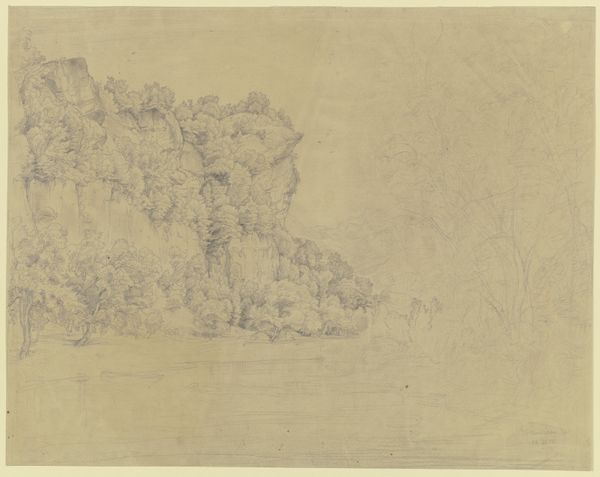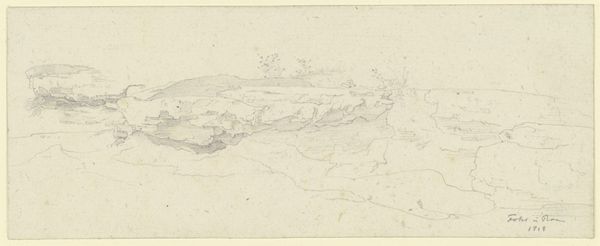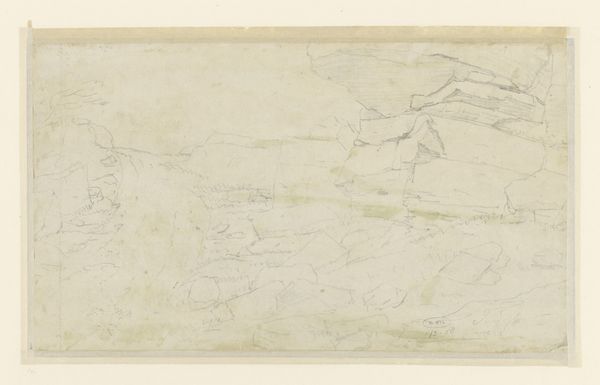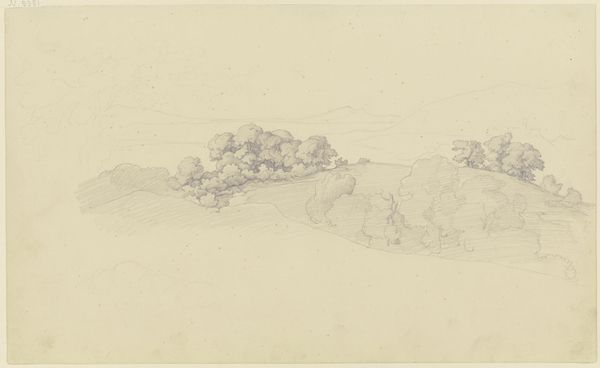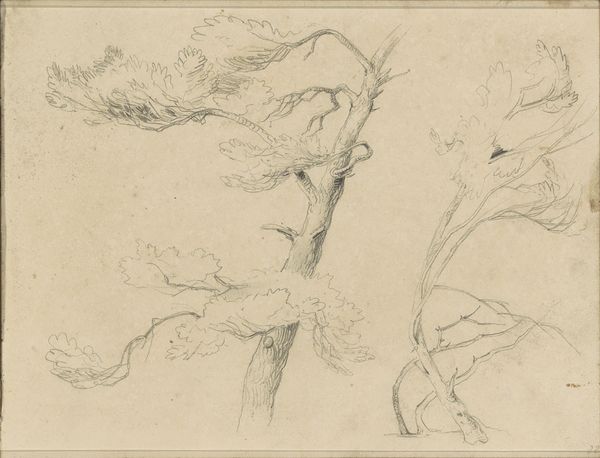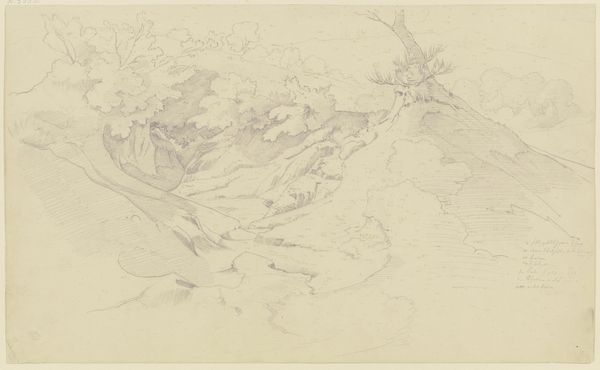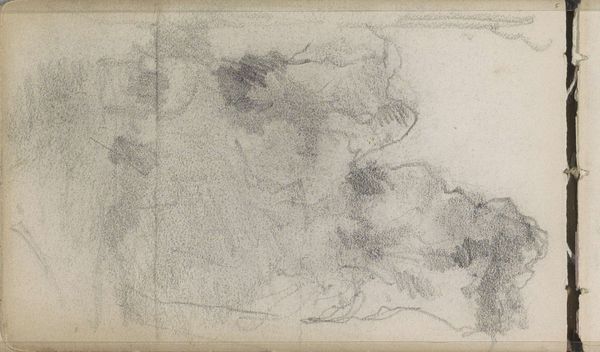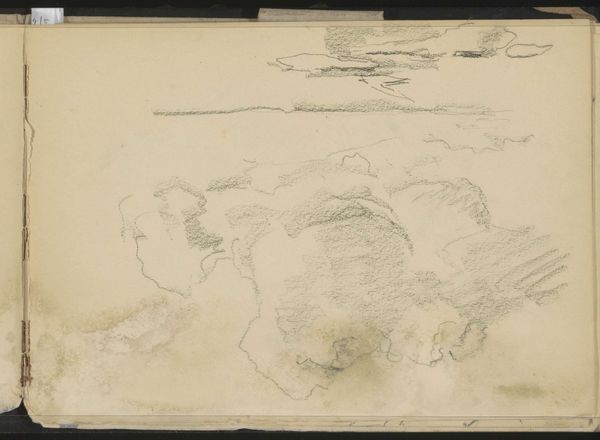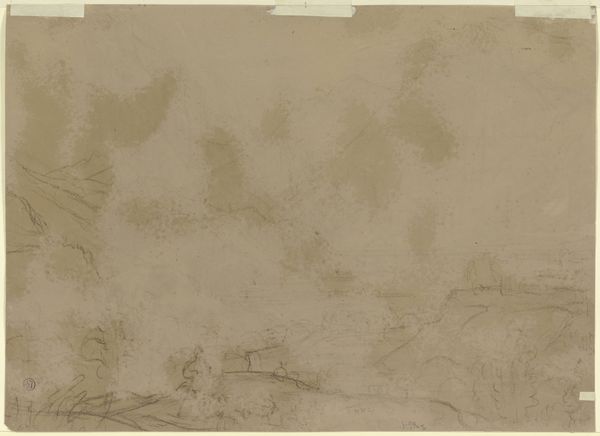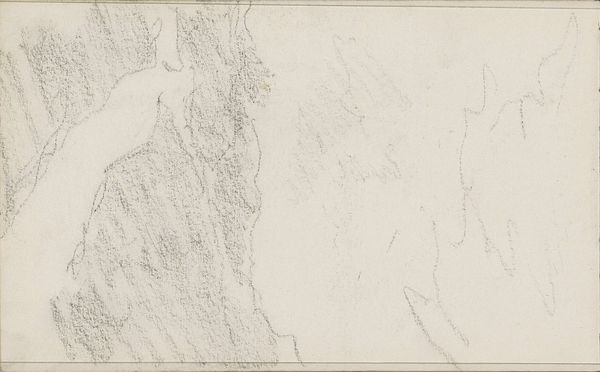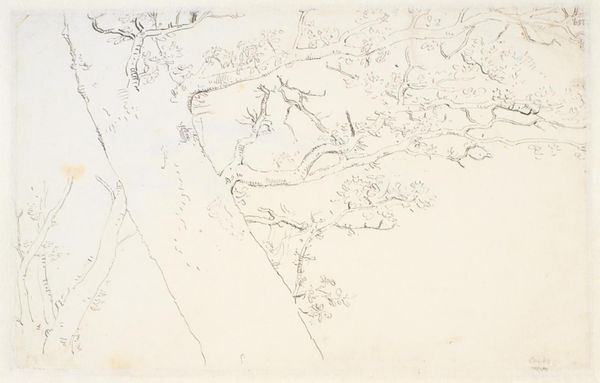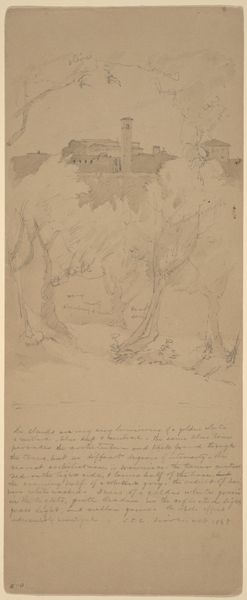
drawing, paper, pencil
#
pencil drawn
#
drawing
#
landscape
#
paper
#
pencil
#
realism
Dimensions: 134 mm (height) x 224 mm (width) (bladmaal)
Editor: We’re looking at Christen Købke’s "Plant Studies," made with pencil on paper, sometime between 1810 and 1848. It's such a delicate rendering of what appears to be foliage, but also quite spare. What strikes you when you look at this work? Curator: Well, seeing these delicate plant studies through the lens of history and social context, I'm struck by the intersection of nature and empire during this period. Consider how botany was both a scientific pursuit and deeply intertwined with colonial expansion. These seemingly innocent depictions of plants could be seen as related to the broader project of understanding and exploiting natural resources within empire. Do you see any echoes of that here, even faintly? Editor: I suppose the act of observing and cataloging plant life, like Købke is doing, is inherently about claiming some kind of dominion, right? Especially when thinking about Danish colonial interests at the time. Curator: Exactly. And what does it mean for an artist like Købke to focus on the specific details, textures, and forms of plant life during an era characterized by dramatic social and political upheaval? I wonder if we can see them as metaphors for resilience, adaptation, and resistance in the face of such forces. How might you connect this to current conversations around environmental justice? Editor: I hadn't considered that parallel, but thinking of plants as survivors—and considering their relationship to environments harmed by colonization—adds a completely new layer. Thank you! Curator: It highlights how art offers a unique lens through which to engage with complex questions. Seeing nature not just as passive subject matter but as an active participant in broader social and political dialogues gives us so much.
Comments
No comments
Be the first to comment and join the conversation on the ultimate creative platform.
